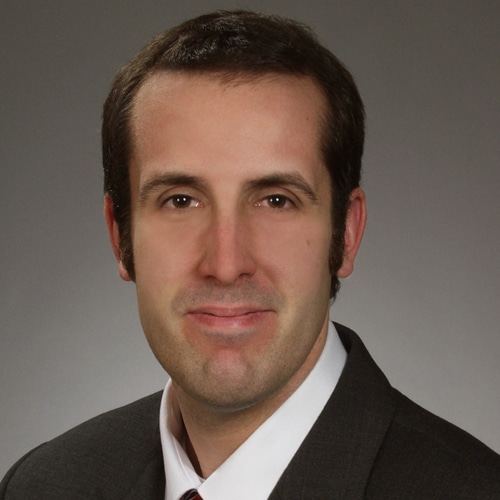Welcome back, readers, to my annual Clio Legal Trends Report analysis/opus for Attorney at Work. I’m offering my thoughts about the 2019 report in three parts, brought together as a coherent (?) whole.
To quickly review, this year’s Clio Legal Trends Report once again examines current and longitudinal data from law firms and consumers to derive legal industry trends. (Access prior reports here.) The report, now in its fourth year, cuts through the usual conjecture and BS, to a large degree, and effectively uses data to drive law firm innovation.
Recall that in Part 1 we examined why some firms grow (and grow) while others stagnate: efficiency, to simplify. Part 2 covers ways that consumer habits and marketing strategy (or lack of) play a role.
Buckle up. This is Part 2 of 1-2-3.
The Two Types of Legal Consumers
The introductory scene in “Zootopia” (I watch a lot of Disney movies, OK?) involves a rabbit thespian’s drawn-out stage death. (There’s lots of ketchup.) It’s a beautiful metaphor for traditional law firm marketing: as in, the old saw that all you need to do is good work and have meaningful personal contacts. That’s the key to making money. Let’s just say that if you want to make a lot of money running a law firm … tell all your competitors to keep doing that.
The modern reality for lawyers (even if most lawyers treat modern reality like a “kick me” sign on their backs) is that consumer habits have changed and are trending away from traditional referral models as a primary source for finding lawyers.
Of those consumers who want to find and hire a lawyer, there are two types: those who ask no one and do their own research, and those who ask somebody.
The 2019 Legal Trends Report indicates that those who ask no one are about to overtake those seeking referrals, even as those two groups are locked in a dead heat right now. The Legal Trends Report relays that 59% of consumers sought a referral for a lawyer, while 57% did their own research. However, only 16% did both (16% searched after getting a referral, 17% got a referral after searching). That means that you’re generally not getting two bites at the apple. And if your only bite is a potential referral, you’re leaving a whole other world of opportunity on the table.
In other words, it’s clear you now also have to service the potential clients who will only do unguided research.
It gets worse for the old-school law firm. Of those legal consumers who preferred referrals, 32% sought those referrals from friends or family members, while 16% sought referrals from another lawyer and only 9% asked a nonlegal professional. In a traditional referral-based law firm that relies nearly exclusively on that model for developing business, most referrals will come from other lawyers. The next most likely referral source is nonlegal professionals. So, even as legal consumers more often try to find lawyers solo, the next place they’re looking is to friends and family members.
Ditch the Referral Marketing Blues
The upshot is that while lawyers can continue to focus on referrals from other lawyers and ancillary professionals, to capture the whole market, lawyers must be present in online search and explore ways to find family- and friend-based referrals. That latter requirement probably means getting involved in more community-based activities that are not legal-centric and becoming active on social media in local channels and groups.
Hey, it turns out being well-rounded is a good thing! Your parents weren’t lying to you!
So, if the solution to the referral marketing blues is to take advantage of community-based marketing opportunities (online and offline) while building out a strong online profile, the next step is to fill in the blanks about how to convert leads from modern legal consumers. Assuming that a vibrant online profile is developed on the back of a consistently excellent content marketing program, the Clio Legal Trends Report also offers subterranean guidance on what you should be creating content about. (Hint, hint: It should be responsive to the questions potential clients will have.)
It turns out that potential clients want to know the following from or about lawyers:
- 77% want to know about a lawyer’s credentials and experience.
- 72% want to know about the types of cases a lawyer works on/has worked on.
- 72% want to better understand the legal process.
- 66% want an estimate of the total cost of the representation.
In other words, legal consumers who are willing to hire a lawyer want one with experience in a practice niche who can guide them through the legal process and give them an idea of the full cost of their services.
Now, don’t get this twisted. This does not mean that you blow out the awards and accolades section of your online profile, as most lawyers will be wont to do when they hear this kind of thing. That is probably not the direct line for a client finding a lawyer.
Practically speaking, potential clients are asking someone else first or looking online — likely with a long-tail search term, which is how laypeople ask legal questions. So, it’s still important to (probably) revamp your marketing in all the ways I’ve alluded to before. However, once clients get to you, once they land on your website or your social or directory profile, that’s when you deliver the goods.
Delivering the Goods
This is a process that includes steps. There are theatrics involved. And this is probably why most lawyers would make terrible magicians. Because the trick is not the same if you just end up holding a coin; you’ve got to pull it out from behind the ear first. So, don’t skip steps related to lead attraction.
Hook them, then provide the required reading:
- On your website, you’ll want individual attorneys’ bio pages with experience and awards and practice areas listed, plus case results.
- Then, when your lead calls, you must be prepared to provide them with concrete steps respecting the course of the representation and a total cost of representation — assuming you’re not willing to publish your fees or have a fee calculator on your website, which most lawyers won’t do.
The good news is that 62% of legal consumers indicate that hiring a lawyer is worth paying a high price if the lawyer is good (read: experienced and able to communicate that experience). And, again, that means price is less important than service. Price is static. And, even as 44% of consumers indicate that they shop around for a lawyer, and 57% talk to more than one lawyer, 42% won’t call another lawyer if they like the first one they talk to.
This is about anticipating potential client questions and responding to them, at all levels of the marketing and intake process.
But, while the quality of response is a requirement, timeliness remains a major factor for converting law firm leads. You’re on the clock.
Stay tuned: Part 3 will cover the disconnect between what clients expect from lawyers and what lawyers are unwilling to give.
Illustration ©iStockPhoto.com
Catch up on the Legal Trends Report Analysis:
“2019 Clio Legal Trends Report, Pt. 1: Firm Revenue Growth Is Driven by Efficiency” by Jared Correia
















